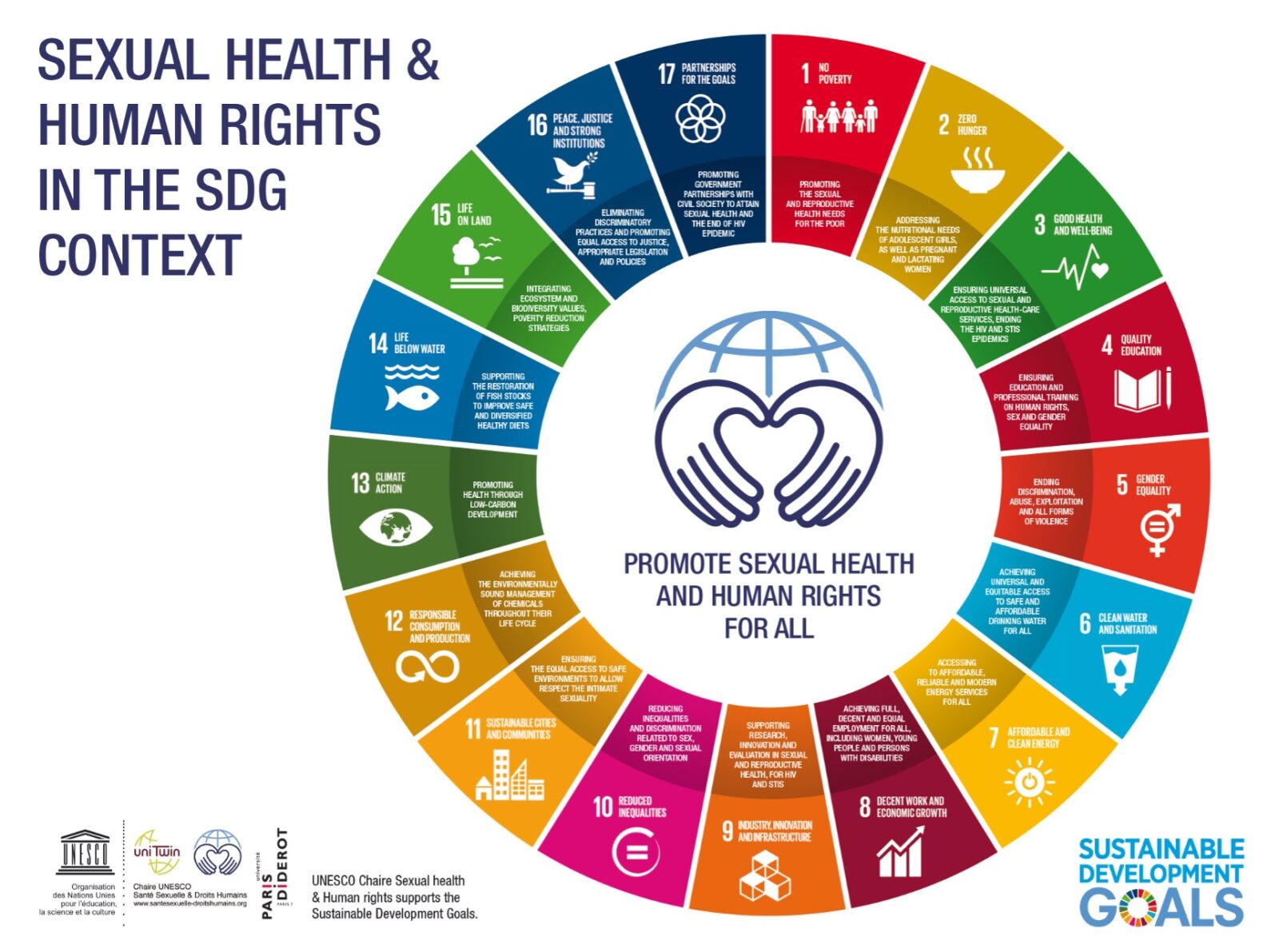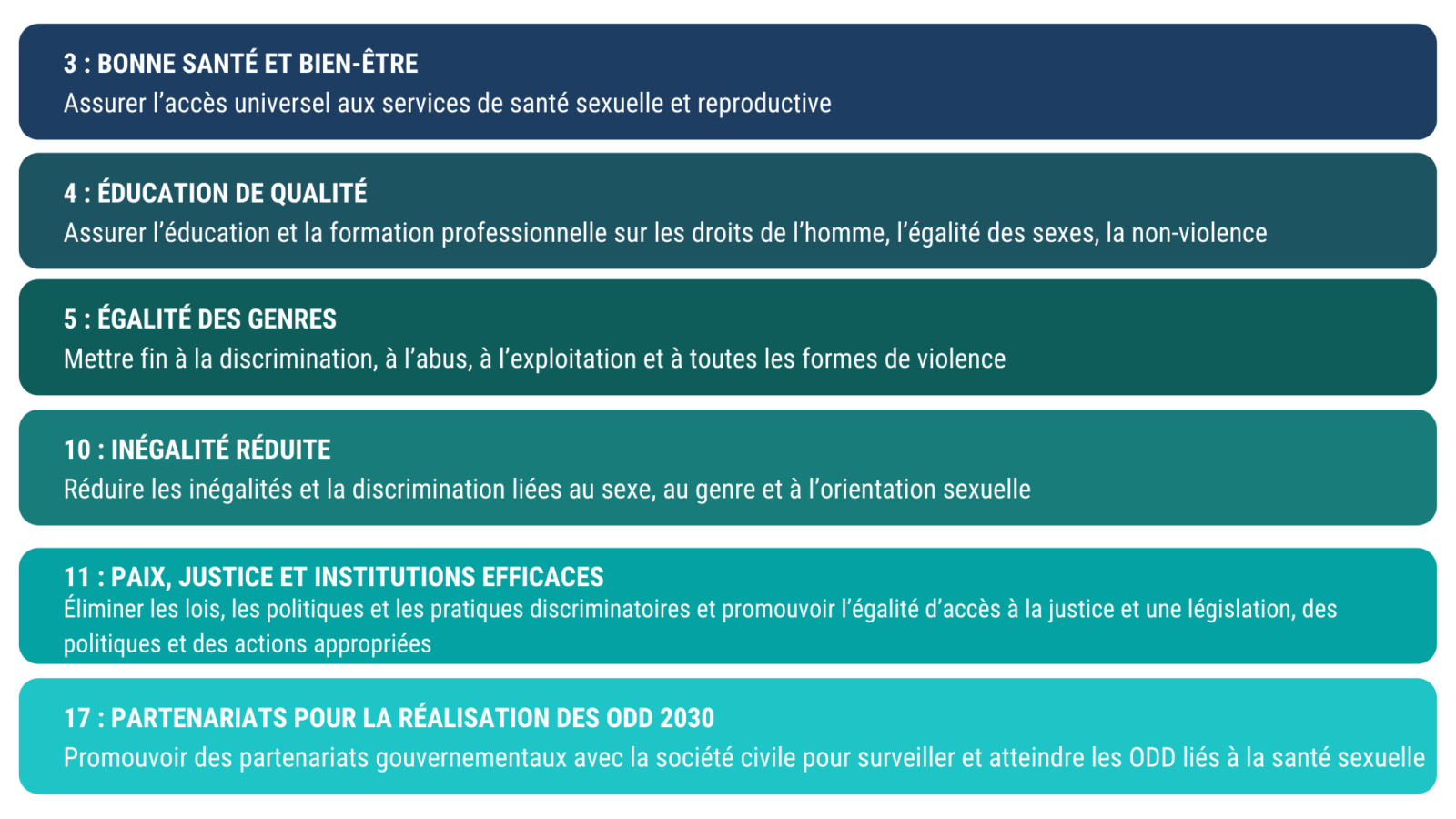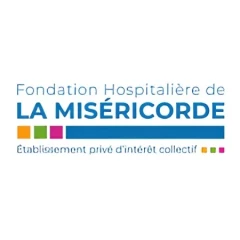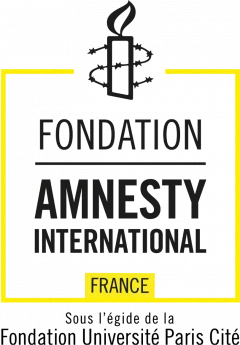Enjeux de Formation
→ Acquérir une approche globale et positive de la santé sexuelle et de la santé reproductive à travers les Objectifs du Développement Durable 2030 (ODD 2030) et des droits humains pour l’intégrer dans sa pratique professionnelle.
→ Optimiser la qualité et la sécurité des soins en santé sexuelle et reproductive
→ Personnaliser la prise en charge dans le cadre de pratiques collaboratives et du rôle propre de chacun des professionnels.
→ Afin de permettre une évolution de nos représentations personnelles et professionnelles sur la sexualité.
→ Faciliter l’accès des personnes à l’information et à l’apprentissage tout au long de la vie sur leur santé sexuelle et leur santé reproductive,
→ Promouvoir la santé et le bien-être sexuel pour vivre mieux et plus longtemps,
→ Améliorer l’accès aux services, aux traitements et aux soins complets de longue durée en cas de besoin,
→ Inclure l’accent sur la population générale et les groupes de population spécifiques comme les migrants, les minorités sexuelles, les personnes handicapées et les personnes âgées,
→ Contester la stigmatisation et la discrimination répandues,
→ Promouvoir une approche axée sur les personnes, l’égalité entre les sexes et l’équité en matière de santé,
→ Promouvoir la Santé sexuelle (OMS 2006) en lien avec les droits humains (OMS. 2015)
La santé sexuelle est née de rencontres internationales d’experts en 1974 et 2002 sous l’égide de l’OMS, qui avaient une vue globale et transversale de la sexualité :
La santé sexuelle est un état de bien-être physique, émotionnel, mental et social en matière de sexualité, ce n’est pas seulement l’absence de maladie, de dysfonctionnement ou d’infirmité. La santé sexuelle exige une approche positive et respectueuse de la sexualité et des relations sexuelles, ainsi que la possibilité d’avoir des expériences sexuelles agréables et sécuritaires, sans coercition, ni discrimination et ni violence.
Pour atteindre et maintenir une bonne santé sexuelle, les Droits Humains et Droits sexuels de toutes les personnes doivent être respectés, protégés et réalisés.
La santé sexuelle est un processus dynamique central de l’être humain tout au long de sa vie qui englobe le sexe, le genre, les identités et les rôles, l’orientation sexuelle, l’érotisme, le plaisir, l’intimité et la reproduction. La sexualité est vécue et exprimée dans les pensées, les fantasmes, les désirs, les croyances, les attitudes, les valeurs, les comportements, les pratiques, les rôles et les relations. Alors que la sexualité peut inclure toutes ces dimensions, toutes ne sont pas toujours vécues ou exprimées.
(publication OMS 2006)
Intégration dans les Objectifs de Développement Durable 2030

Les 17 Objectifs du Développement Durable (ODD) 2030 lient les droits humains et la santé sexuelle et plus particulièrement les Objectifs :

Mettre en œuvre les priorités nationales
Les objectifs de nos formations visent à rendre opérationnel dans le champ de la santé sexuelle, de la santé procréative et reproductive les acteurs et promoteurs de la santé mais aussi les secteurs socio-sanitaires, de l’éducation, de la justice et tous les professionnels intervenant dans ces domaines.
En octobre 2017 la Stratégie Nationale de Santé Sexuelle 2030 (SNSS 2030), s’articule autour de 6 axes stratégiques, elle se décline en axes opérationnels dans les feuilles de route (2018-2021 et 2022-2024) :
→ La promotion de la santé sexuelle et reproductive, dans une approche décloisonnée et cohérente, dans tous les lieux de vie, ainsi que l’information, et l’éducation à la sexualité, notamment des jeunes et la formation et sensibilisation des professionnels de santé,
→ Les parcours de santé sexuelle (concernant les IST, dont le VIH et les hépatites) et reproductive :
→ Les dépistages et la prévention biomédicale.
→ La prise en charge: les traitements et les structures impliquées
Ces deux axes doivent se décliner en pratique en direction de la population générale et des populations clés, ainsi qu’en fonction des spécificités territoriales: Métropole et Outre-Mer, déclinaisons régionales et espaces ruraux et urbains
Mettre en œuvre les recommandations internationales
L’UNESCO : les principes directeurs de l’Education Sexuelle Complète (UNESCO, 2009, 2018)
OMS:
→ Guide sur la Brève communication relative à la sexualité en direction des professionnels de santé (OMS, 2015) dans le cadre de la lutte contre les IST/VIH et la santé de la reproduction
→ Les recommandations sur la mise en oeuvre des droits sexuels (OMS, 2015)
Ils nous ont fait confiance.
Newsletter
















